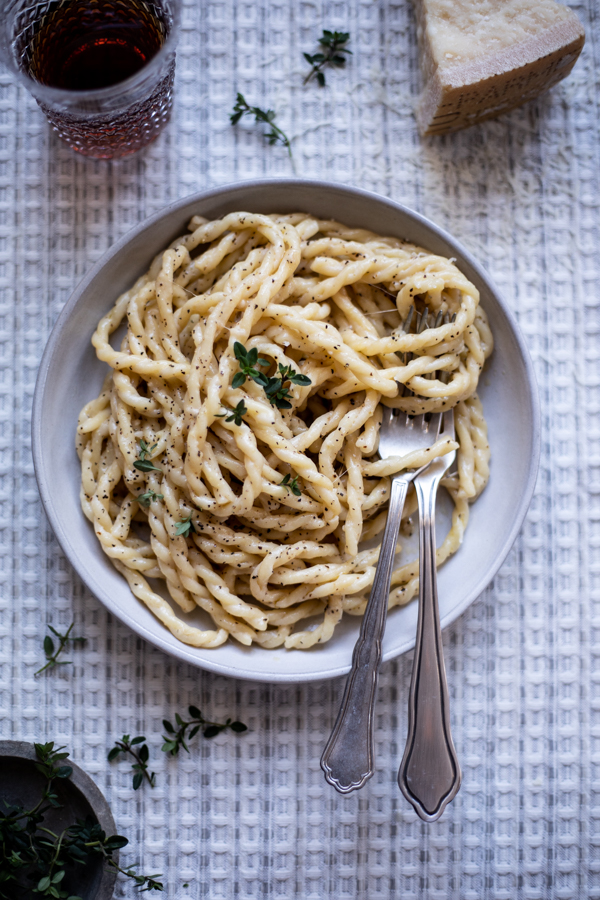January 10, 2019
The classic Italian pasta dish meaning “cheese and pepper”

I remember the first time I had cacio e pepe. I thought it had to be the easiest pasta dish to prepare. I mean how much really is there to cheese and black pepper? Turns out there’s actually a lot to it…

Luckily, I’m going to give you a few little tips and tricks to master the traditional Italian cacio e pepe (meaning “cheese and pepper”) that originated centuries ago in Rome, the heart of the Roman Empire.

So let’s go back in time to a few centuries ago…
Pecorino Romano cheese, also known as “cacio” in the Roman dialect, is a sheep’s cheese that was used for centuries on the Mediterranean coast. Both the ancient Romans and Greeks used the cheese extensively (even 3,000 years before Christ!). In 408 BC, when the Romans bartered with a tyrant named Alarico, they gave him thousands of pounds of gold and black pepper (because black pepper is just as valuable as gold, right?)! And so, with pasta being a staple food in the Roman Empire, cacio e pepe was born. In fact, shepherds perfected the recipe since they always carried a piece of aged Pecorino, pepper, and pasta in their bags. With a piece of animal fat to bring the ingredients together, they had everything they needed to complete the famous pasta dish.
So you can thank the ancient Romans for all this pasta goodness!

But what are some secrets to the perfect cacio e pepe?
It all starts with the black pepper. Instead of sprinkling the black pepper on at the end or even when you add the cheese in, add it to the olive oil when the oil is heating up. This way, you are infusing the olive oil with the taste of pepper. If you like a strong pepper taste, don’t hesitate to add more at the end 🙂
Don’t be cheap with the cheese! A generous helping of good quality Pecorino Romano is the key to a flavorful cacio e pepe. The more cheese the better, in my opinion.
And finally, before you dump that pasta water, save at least about half a cup! This step is crucial in making the cheese and olive oil come together to evenly coat the pasta. The starch in the pasta water helps to create a nice, thick but smooth sauce.

So now that I am salivating writing this post, I’m going to go finish the leftovers! Ciao!
If you make this recipe, be sure to tag your creation with the hashtag #foodfinessa.
Cacio e Pepe.
- 3 tablespoons olive oil
- 2 teaspoons ground black pepper
- 6 ounces spaghetti
- 2 tablespoons unsalted butter
- 1-1/2 cups Pecorino Romano cheese, shredded
- Fresh thyme
- In a large skillet over medium-low heat, heat the olive oil and black pepper. Meanwhile, cook the pasta until al dente according to the directions on the package.
- Add butter to olive oil and pepper. Once butter has melted and pasta is al dente, pour in about 1/2 cup of the pasta water into the oil mixture. Remove the pasta from the water, and add them to the oil mixture with tongs. Sprinkle cheese over top. Stir until pasta is evenly coated in sauce, but be careful not to break up the pasta. Remove from heat, and serve warm with fresh thyme. Buon appetito!
